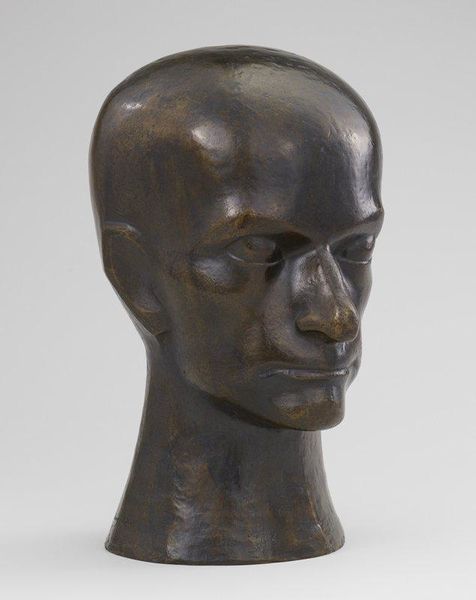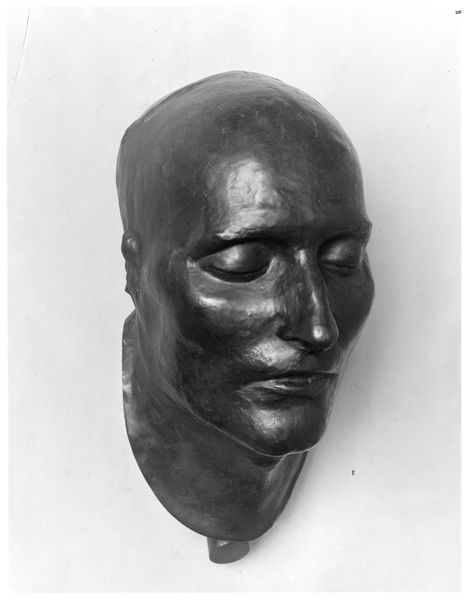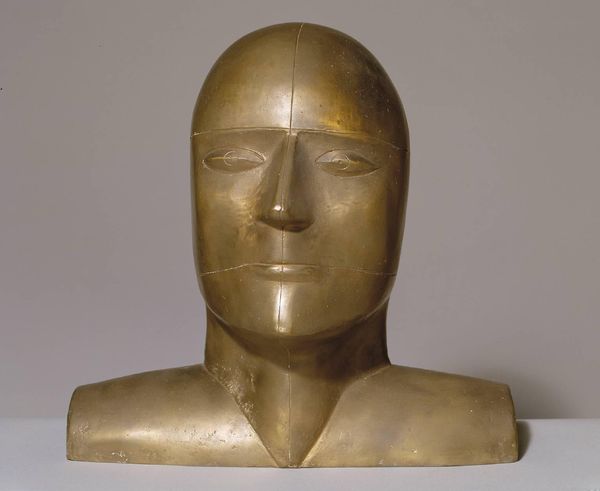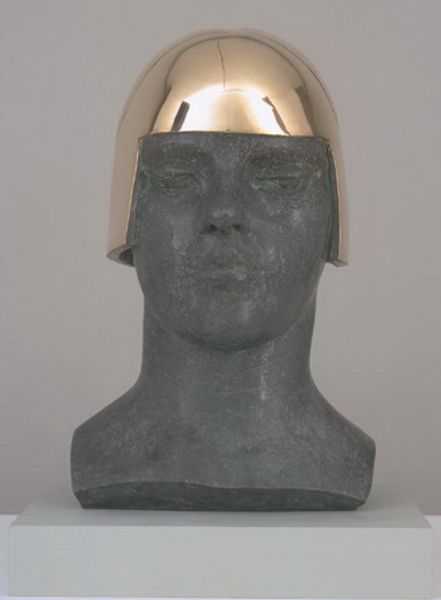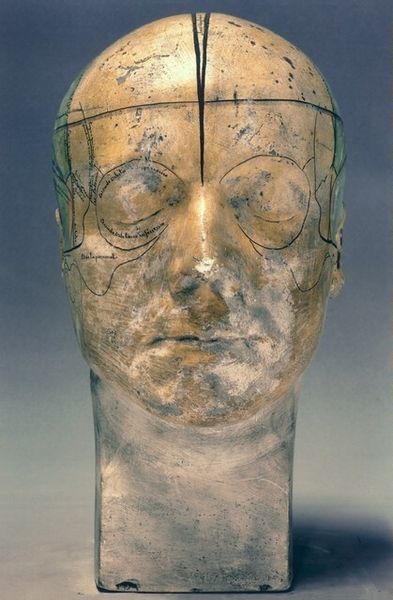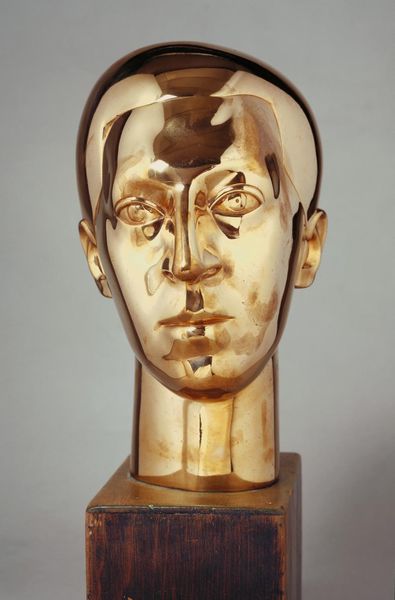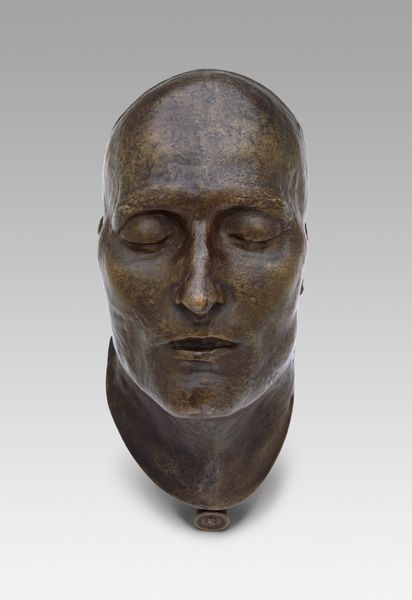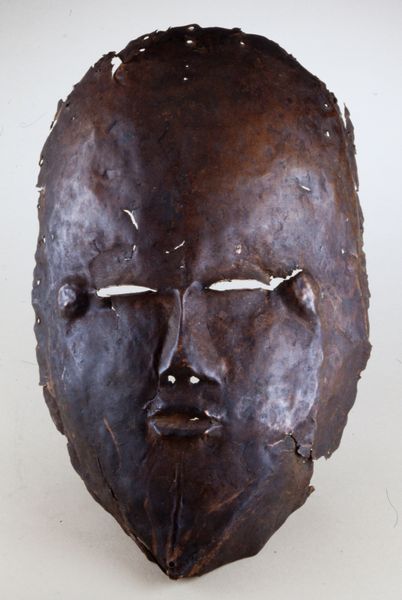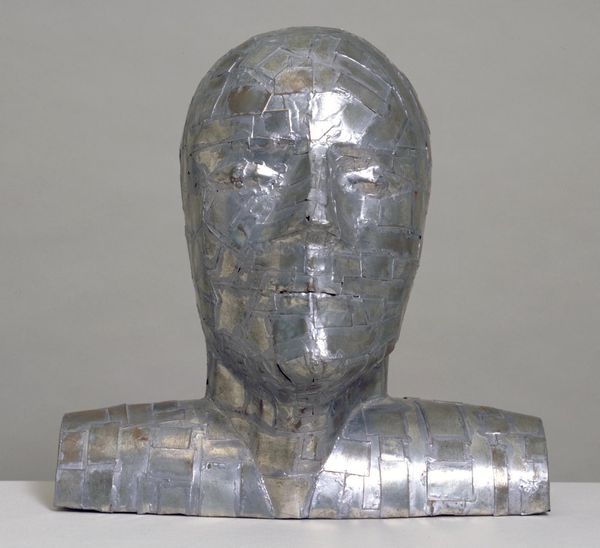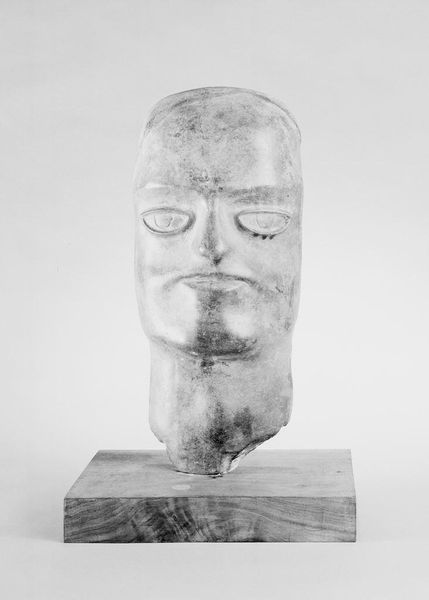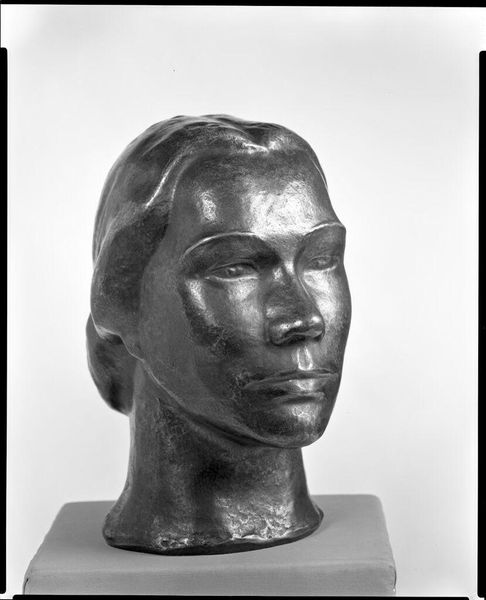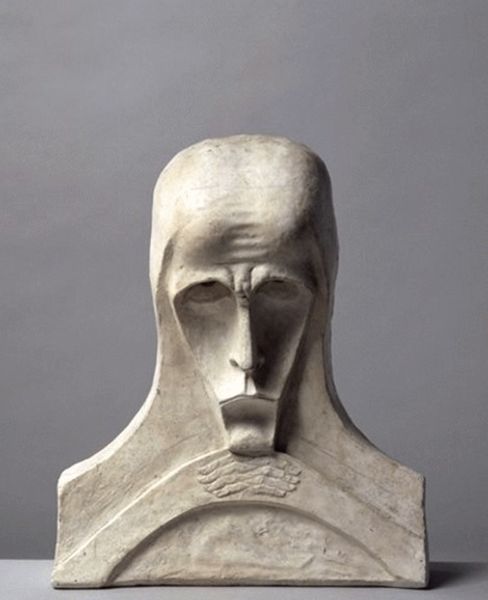
Dimensions: object: 600 x 565 x 445 mm, 40 kg
Copyright: © Frink Estate | CC-BY-NC-ND 4.0 DEED, Photo: Tate
Editor: This bronze sculpture is Dame Elisabeth Frink's "Goggle Head". The metallic sheen and impersonal goggle-like eyewear give it a detached, almost authoritarian feel. How do you interpret the social commentary within this piece? Curator: Considering Frink's era, and the socio-political anxieties of the Cold War, this head reflects institutional power. The goggles obscure individuality, suggesting a surveillance state. What does the scale of the piece communicate to you? Editor: That it is meant to be imposing and to command space. Curator: Exactly! Its presence in a public space could then be seen as a commentary on the ever-present gaze of authority. Editor: That’s a perspective I hadn’t considered. Thanks! Curator: You're welcome. It's always about questioning whose gaze is reflected and amplified by art institutions.
Comments
Join the conversation
Join millions of artists and users on Artera today and experience the ultimate creative platform.
tate 8 months ago
⋮
Man, either as victim or aggressor, was a dominant theme throughout the career of British sculptor Elisabeth Frink. In the late 1960s she embarked on a series of male busts in which the eyes are concealed by sinister, polished goggles. The obscured identity of the person behind the goggles creates a sense of menace and aggression, presenting an archetype of man rather than an image of an individual. Frink considered these busts to be her first explicit comments on the world’s inhumanity, and said later that ‘they became a symbol of evil for me’. Elisabeth Frink was born in Thurlow, Suffolk in 1930 and died in Blandford Forum, Dorset in 1993. Gallery label, August 2004
